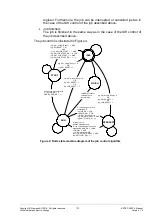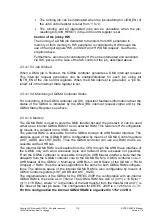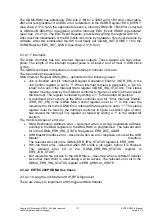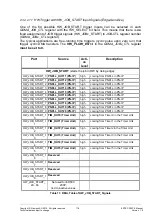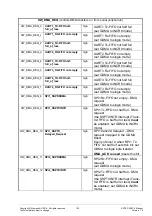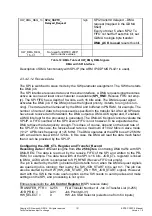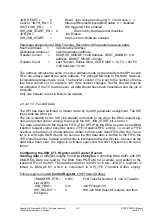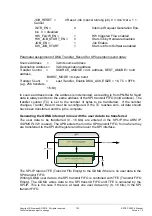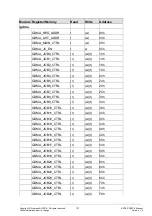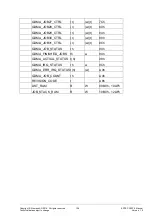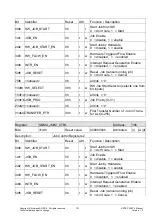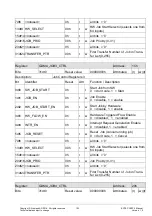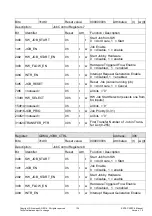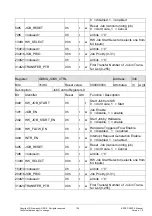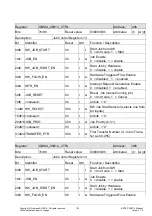
Copyright © Siemens AG 2016. All rights reserved
124
ERTEC 200P-2 Manual
Technical data subject to change
Version 1.0
As a result of the posted response at the AHB interface of the GDMA, the GDMA interrupt
generation behavior for SPI data transfer varies depending on the transfer mode at the
AHB (single / burst mode).
In
single transfers
, the first instance of write access to the SPI-IP is acknowl-
edged at the GMDA immediately by the ML-AHB (posted behavior) even before it
is entered in the SPI transmit FIFO. As TFE (Transmit FIFO Empty) is not yet re-
set, another instance of write access to the SPI-IP is triggered and implemented by
the GDMA despite single transfer.
Consequence:
Despite single mode, up to 2 user data transfers to the SPI-IP can
be carried out by the GDMA (behavior in this case corresponds to an INCR2
burst). This means that:
o
when the number of data transfers is even, the GDMA interrupt always be-
comes active 3 SPI transfers (8…16 bits) before the end of the SPI transfer
1 SPI transfer in the SPI shift re 2 SPI transfers in the SPI trans-
mit FIFO
o
when the number of data transfers is odd, the GDMA interrupt always be-
comes active 2 SPI transfers (8…16 bits) before the end of the SPI transfer
1 SPI transfer in the SPI shift re 1 SPI transfer in the SPI transmit
FIFO
In
burst transfers
, complete burst access (INCR, INCR4, INCR8, …) is always to
the SPI-IP. The user must therefore ensure that the number of items of user data
entered in the SPI transmit FIFO by the GDMA does not result in a FIFO overflow.
As the first user data transfer in burst access resets TFE (Transmit FIFO Empty),
this information is available at the GDMA at the end of burst access and ensures
that there is no further GDMA write access
Consequence:
In burst mode, the GDMA can carry out user data transfers to the
SPI-IP of up to the AHB burst length. This makes the GDMA interrupt active up to
"AHB burst 1" before the end of the SPI transfer.
The GDMA interrupt can be generated independently of the user data to be transferred if
the final user data transfer to be carried out with the SPI is processed with its own trans-
fer element in the GDMA job. As in this case the GDMA must first read the next transfer
element over the AHB, TFE (Transmit Fifo Empty) is reset by the SPI-IP until the time of
the actual single transfer so that the GDMA does not transmit this last instance of write
access to the SPI-IP until TFE (Transmit Fifo Empty) is set again, which is always the
case when there are no more data in the SPI transmit FIFO. The GDMA interrupt there-
fore always becomes active 2 SPI transfers (8…16 bits) before the end of the SPI trans-
fer.



